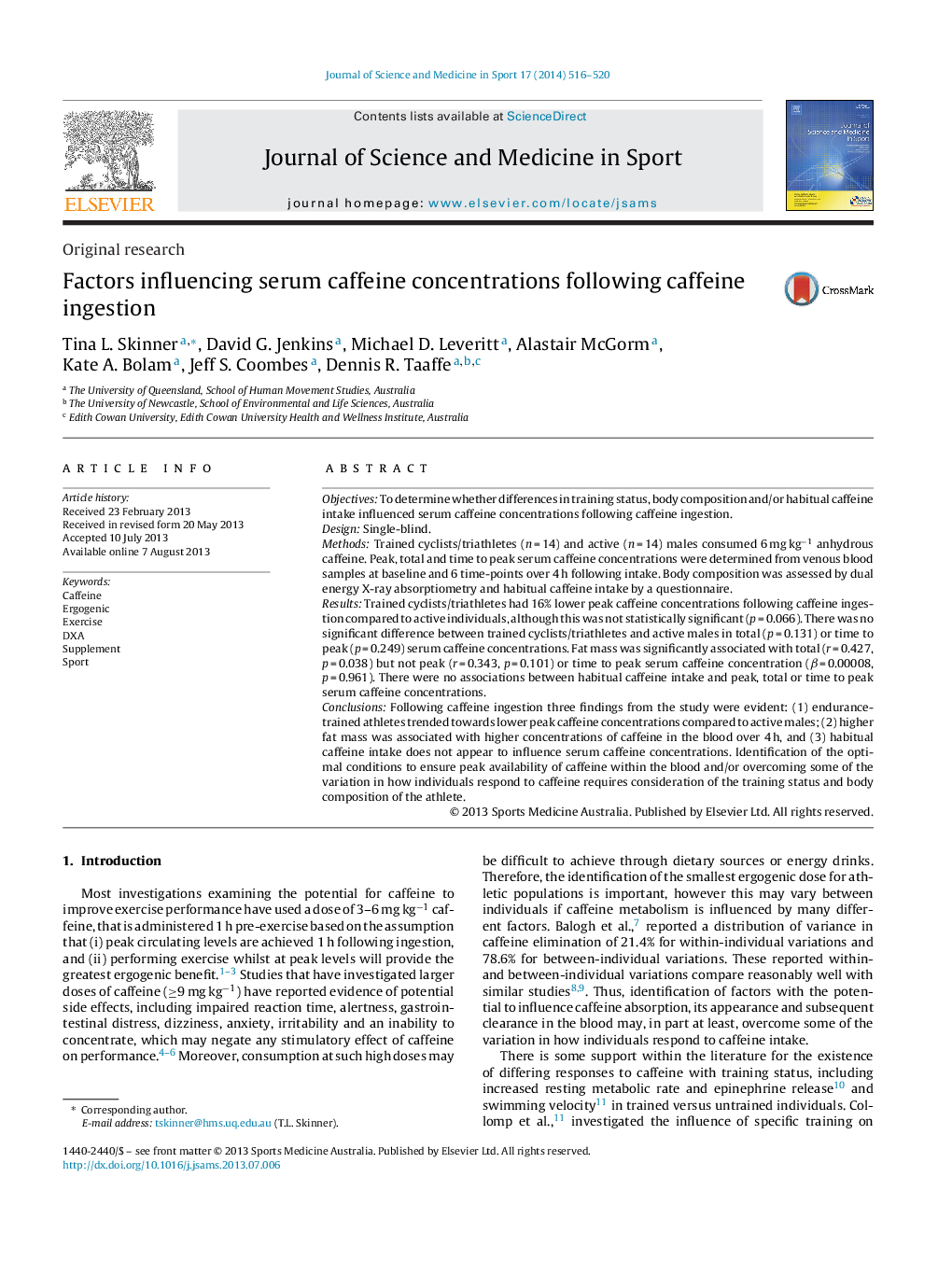| کد مقاله | کد نشریه | سال انتشار | مقاله انگلیسی | نسخه تمام متن |
|---|---|---|---|---|
| 2704459 | 1144683 | 2014 | 5 صفحه PDF | دانلود رایگان |
ObjectivesTo determine whether differences in training status, body composition and/or habitual caffeine intake influenced serum caffeine concentrations following caffeine ingestion.DesignSingle-blind.MethodsTrained cyclists/triathletes (n = 14) and active (n = 14) males consumed 6 mg kg−1 anhydrous caffeine. Peak, total and time to peak serum caffeine concentrations were determined from venous blood samples at baseline and 6 time-points over 4 h following intake. Body composition was assessed by dual energy X-ray absorptiometry and habitual caffeine intake by a questionnaire.ResultsTrained cyclists/triathletes had 16% lower peak caffeine concentrations following caffeine ingestion compared to active individuals, although this was not statistically significant (p = 0.066). There was no significant difference between trained cyclists/triathletes and active males in total (p = 0.131) or time to peak (p = 0.249) serum caffeine concentrations. Fat mass was significantly associated with total (r = 0.427, p = 0.038) but not peak (r = 0.343, p = 0.101) or time to peak serum caffeine concentration (β = 0.00008, p = 0.961). There were no associations between habitual caffeine intake and peak, total or time to peak serum caffeine concentrations.ConclusionsFollowing caffeine ingestion three findings from the study were evident: (1) endurance-trained athletes trended towards lower peak caffeine concentrations compared to active males; (2) higher fat mass was associated with higher concentrations of caffeine in the blood over 4 h, and (3) habitual caffeine intake does not appear to influence serum caffeine concentrations. Identification of the optimal conditions to ensure peak availability of caffeine within the blood and/or overcoming some of the variation in how individuals respond to caffeine requires consideration of the training status and body composition of the athlete.
Journal: Journal of Science and Medicine in Sport - Volume 17, Issue 5, September 2014, Pages 516–520
